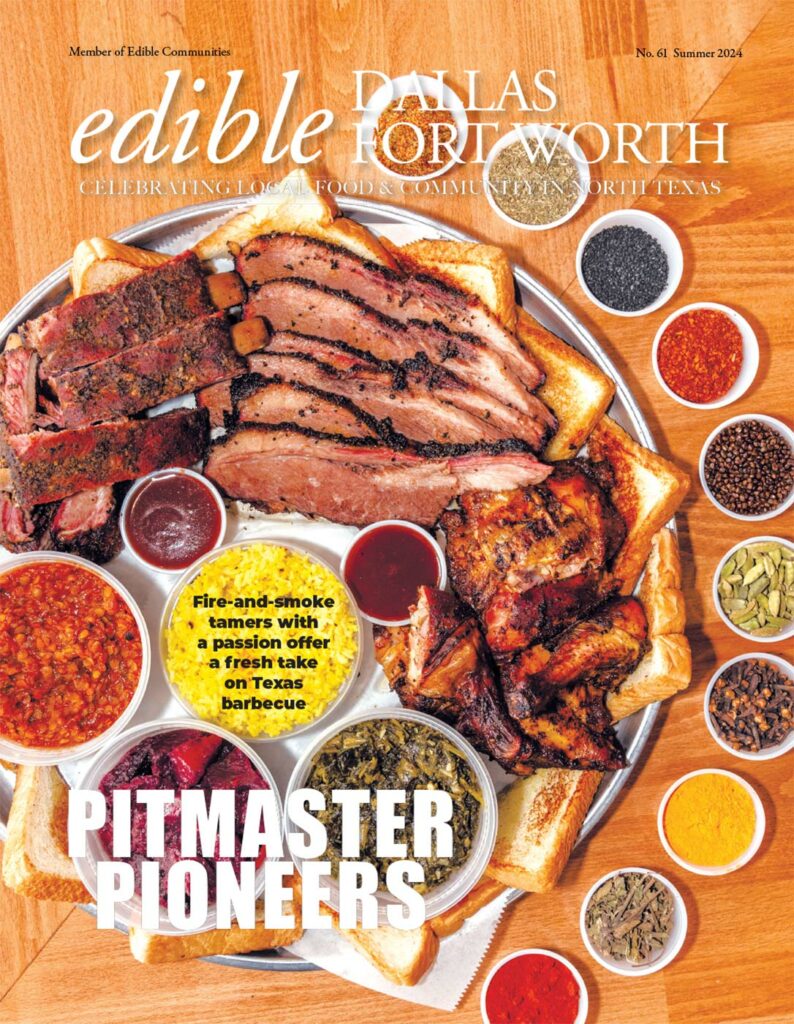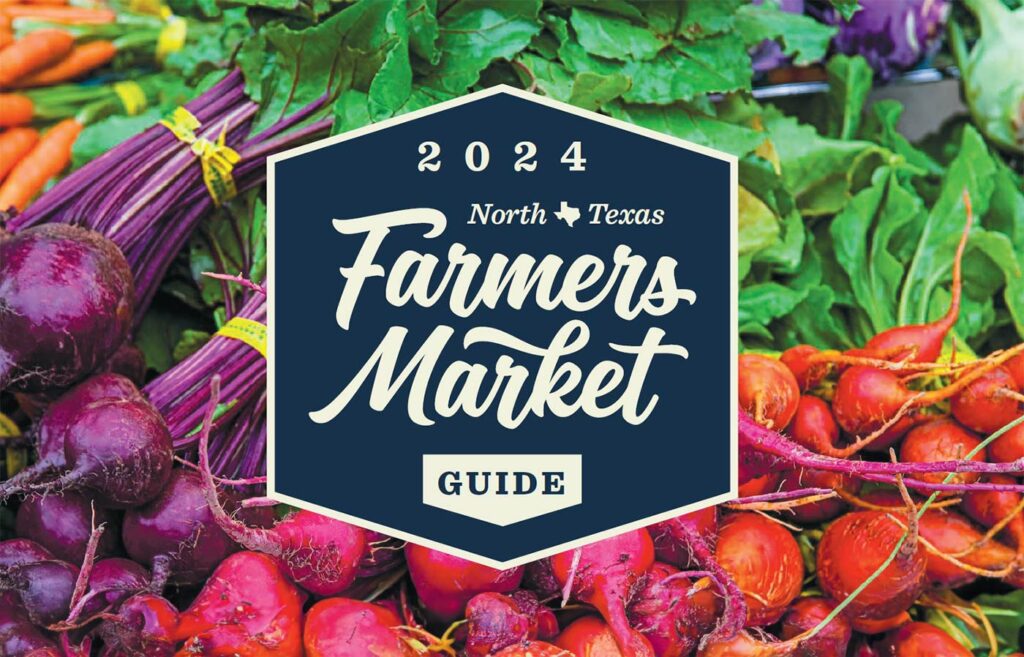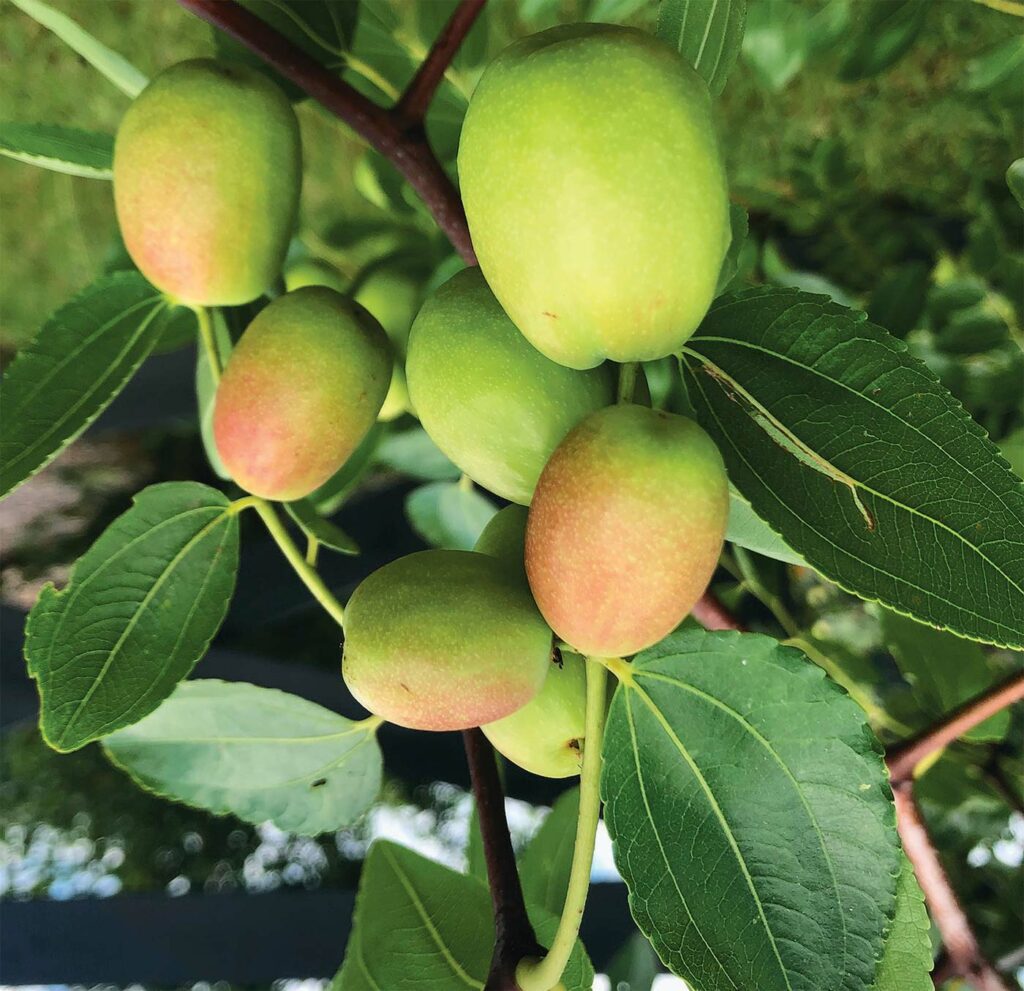
BOB WELLS NURSERY OFFERS A BOUNTY OF OPTIONS FOR WINTER PLANTING
PHOTOGRAPHY COURTESY BOB WELLS NURSERY
In the dead of winter, the bounteous promise of growing food might not be top of mind, but if you find growing fruits apeeling, going out on a limb with winter planting might just be the right fit.
Planting fruit trees is a great way to grow food, and depending on what species you choose, you just might be able to yield ample harvests, which sweetens the deal! In Texas, fall is generally regarded as one of the best times to plant perennial flowers, shrubs and trees. And spring is another planting season that gardeners dig for planting, but if you’re growing fruit trees, there’s another season to consider that stretches from December into February: that’s the perfect time to plant bare-root fruit trees. Bare-root trees are so called because they come without foliage or soil but rest assured, they are alive and well, just in a dormant state.
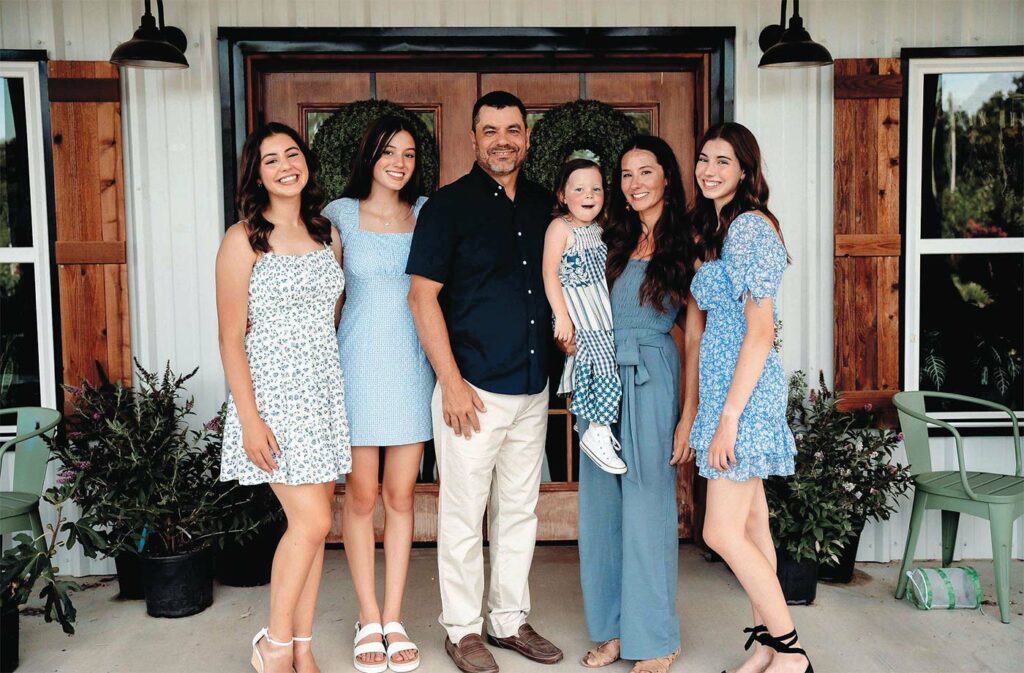
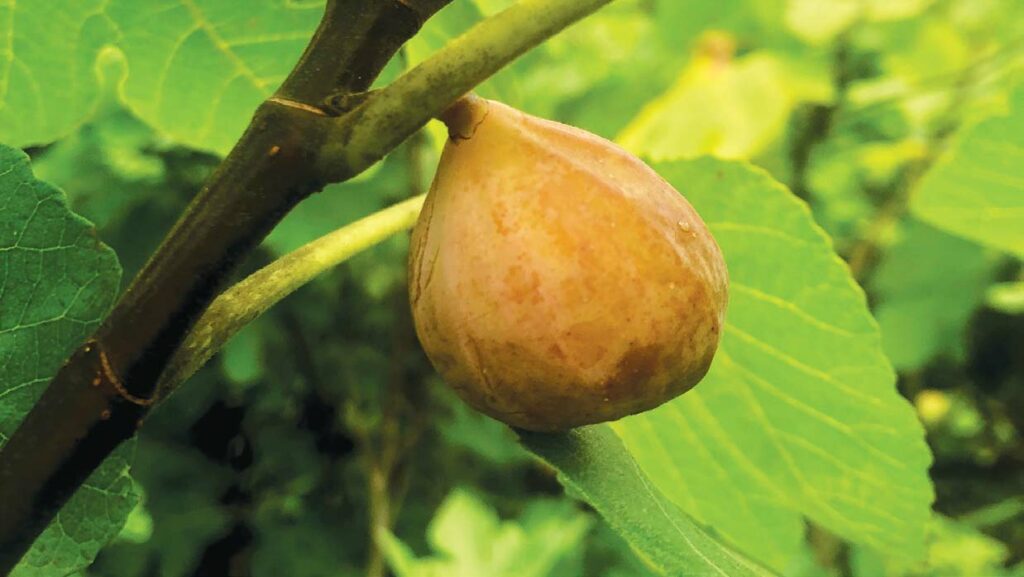
GROWING A PASSION
Ed and Rachel Donnelly are the owners of Bob Wells nursery at Sorelle Farms in Mineola, Texas, just a day-trip east of the Metroplex. On their website, they proudly offer “the largest selection of edible landscape plants” in the state of Texas. The couple acquired the nursery in 2018. Rachel handles retail operations, while Ed manages the wholesale and growing side of things. The word “Sorelle” is the Italian word for “sisters,” and with four daughters, they say the name just seemed a brilliant fit for the property which houses their growing operation.
Specializing in all types of edible plants, the Donnellys sell several thousand bare-root fruit trees each year in addition to container-grown fruits, vegetables, and shade and ornamental trees through their retail, mail-order and wholesale operations.
“We have varieties you can’t find anywhere else,” says Ed. “We also have the expertise to equip our customers to be successful when planting fruit trees—because so many are new to growing edible plants.”
“And I would even say,” Rachel adds, “if we don’t know how to grow it, we get the best expert we know to teach a class on the subject.” Because education is one of their primary goals. “It’s really important for us to not only be selling trees, but also to be equipping people to grow them well—especially since growing an edible landscape isn’t always the easiest thing to do in Texas,” Rachel explains.
Surprisingly, these horticultural experts cultivated their passion after starting out in different fields.
Ed worked in the computer business for over 20 years in Frisco. As his tree-growing hobby grew, so did his goal to leave both the urban landscape and corporate America behind. Rachel developed a passion for gardening, specializing in vegetables and fruits—with a growing desire to help others do the same. She incorporated gardening into the curriculum while homeschooling their own daughters, in addition to helping teach others in homeschooling co-ops. The couple liked the allure of raising their girls in a place with lots of space, peace and quiet; thriving at a slower pace was appealing— and now they are doing just that.
LEARNING TO GROW
The Donnellys have a hunger for helping others, so when planting the seed for their new business endeavor, they grafted an educational component onto a foundation of providing quality plant material.
To set their customers up for success, both Ed and Rachel encourage them to wait to begin planting any trees until mid-October and onward to avoid the challenges of heat and drought that are almost always associated with transplanting during Texas summers. There are also several benefits to waiting a little bit longer to plant.
Ed recommends planting bare-root fruit trees during December, January and February while the trees are dormant— when they can put most of their energy into root development. Additionally, during the winter months, pest and disease pressure is arguably lower than at any other time in the year.
“You’re going to give the root ball more time to develop and grow while the tree is dormant, so it will come out stronger in the spring once it does flush out,” says Ed.
But he cautions, “You can’t plant bare-root fruit trees at other times of the year, because once the trees are flushed out, then there is a higher chance of them dying.”
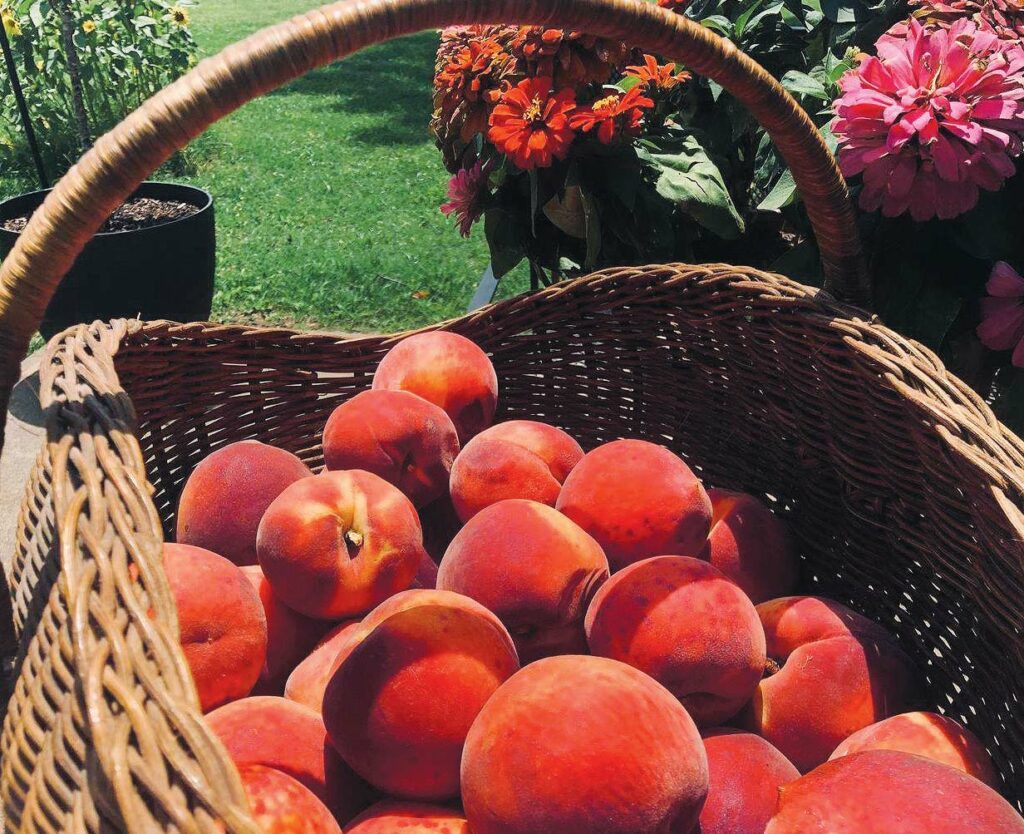
PICKING THE RIGHT FRUITS
In addition to carrying a number of different varieties of standard fruits like peaches (they stock over 50 types!), the Donnellys offer harder-to-find species that not only taste great but tend to be easier for beginning fruit growers both in traditional pots and in bare-root form, depending on the species and the time of year.
“When you start to get into some of the more unique varieties you can’t find anywhere else—those are really the things that we like to carry, things like mayhaw, paw paws, jujubes, pomegranates, some of the different persimmons that are hard to come by, and the newest and latest variety of grapes that are Pierce’s disease resistant,” says Ed.
For Rachel, “My personal favorite is one that I planted when we first started our orchard of fruit trees, and that is the jujube. I love it. It’s prolific, it’s so low maintenance, and you can eat them fresh or you can dry them,” she says.
She also favors the jujubes because not only are they cold hardy, they are also heat and drought tolerant and flat-out thrive during our extreme Texas summers. “There’s just nothing to go wrong with the jujube. It’s an easy, easy tree!” Rachel exclaims in unequivocal praise. But that’s part of the Donnellys’ mission, to connect gardeners with the trees that best suit their tastes, and experience level–even if those species are unique and new to them!
For Ed, it’s the unparalleled flavor of the iconic Texas peach that makes it his most treasured fruit to grow. “You can’t really get good peaches at the grocery store, and I love being able to walk out to the tree and pull a fresh, ripe, juicy, sweet peach off the tree,” he says.
But for aspiring orchardists who are just digging in, the Donnellys advocate for stress-free fruits to get growing.
“What we would recommend on the disease and pest resistant side would be the figs, jujubes, pomegranate, persimmons. Generally speaking, they are pretty easy to grow. You don’t have to spend a lot of time thinking about spraying or maintenance,” says Rachel.
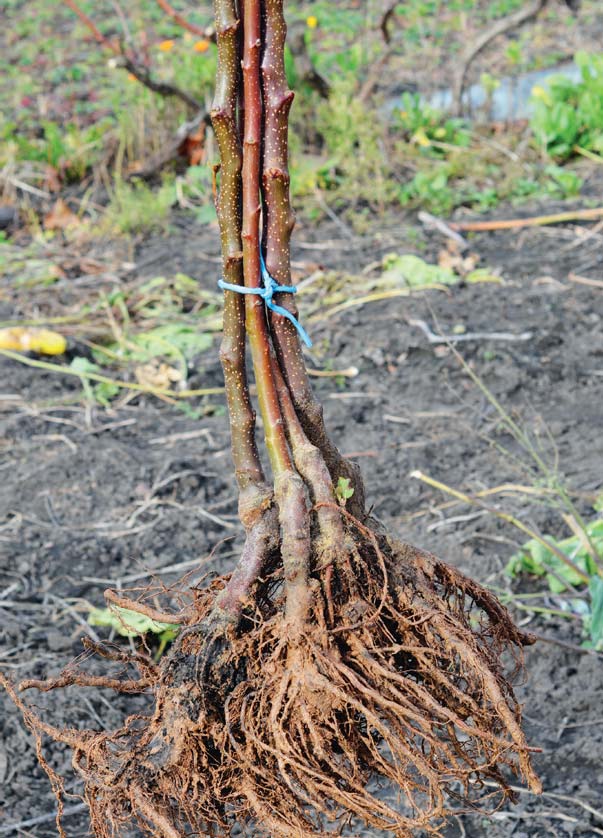
TIPS FOR A BOUNTIFUL HARVEST
When you are growing fruit at home, the Donnellys suggest adjusting expectations about the appearance of the harvested fruit itself—especially when growing peaches, plums, pears and apples.
“When you walk into the grocery store to buy fruit, it all looks perfect. It doesn’t taste like anything, but it does look perfect,” Rachel says wryly. “When you grow it at home, it’s not going to look like that, but it’s going to taste better!”
Homegrown fruit might have a blemish or be misshapen, but if you adjust your expectations and accept a few slight imperfections, the superior flavor is almost always worth the effort.
They also recommend having a year-long plan both for maintenance and to help stay on top of potential pest and disease issues before they get out of hand. “We have planting guides for those planting both bare-root and containerized fruit trees [the latter for spring and fall planting] as well as grow guides for specific varieties on our website. They can also come in and talk with us, anytime,” says Ed.
THE EARLY BIRD GETS THE WORM
To ensure your pick of your favorite bare-root tree, both Ed and Rachel suggest getting your order in early, whether you order online from their mail-order selection or make the short day-trip to their nursery and garden center in east Texas.
“It’s a short [buying] season, because we get so warm so early here in Texas,” cautions Ed.
“And some of the rarer stuff we just don’t sell bare-root at all, because of the higher rate of failure for some species,” adds Rachel. They want their beginner tree-growers, above all, to find success.
This is why once the trees start leafing out, which can happen with a warmer-than-average late winter or spring, the Donnellys no longer sell them in their bare-root state, as the trees may go into shock. (But not to worry, they might have them in a container for in-person pickup!)
Apples, pears, jujubes, grapes, peaches, plums, nectarines, and other stone fruits are often offered bare-root, but for a full list of current availability visit BobWellsNursery.com. And while you’re there, you can also check out their list of free educational resources and gardening classes!
BobWellsNursery.com; IG: @bobwellsnurserytx; FB: @bobwellsnursery
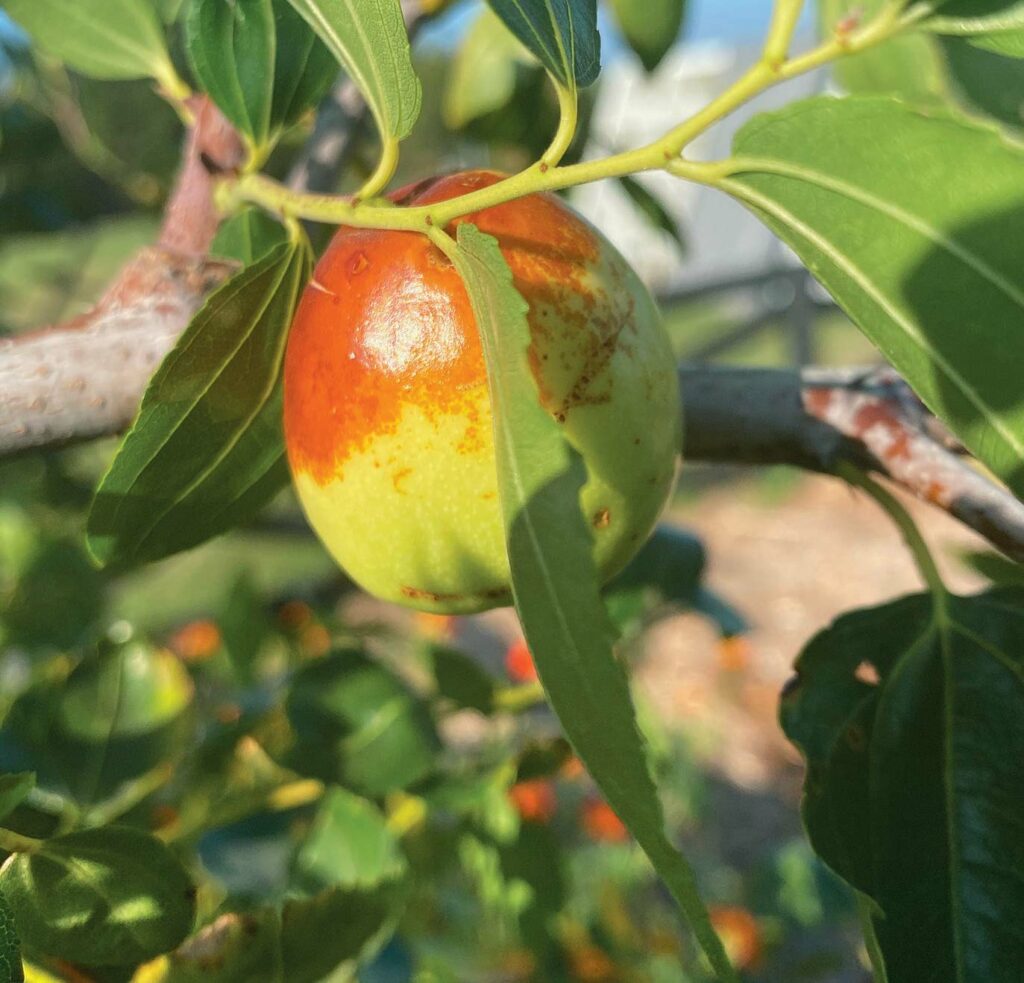
THE DONNELLYS’ BARE-ROOT FRUIT TREE PLANTING CHECKLIST
Before planting, keep the roots moist. The Donnellys highly recommend soaking them for 24 hours with water but preferably also a root stimulator (like MicroLife Super Seaweed Root Stimulator).
Avoid digging a round smooth hole (especially for those with heavy clay soils). Instead, dig a rough hole at least twice as big as the root area.
The graft, which is located between the root and stem, should be at least one inch above the soil line.
In the early stages after planting, and especially during the Texas summer, be more vigilant about watering, because the root system isn’t quite as developed with bare-root trees. While watering newly planted bare root trees is crucial, be mindful not to overwater as the tree becomes more established.
After planting, apply a 2”–4” layer of your favorite mulch around the tree. But avoid piling mulch too close to the base of the tree.
Do not fertilize until the tree begins to leaf out in the spring. Organic, slow-release fertilizer is best for the first year.
Daniel Cunningham, Horticulturist with Texas A&M AgriLife's Water University program. His primary focus is a holistic approach to landscaping and food production systems. Cunningham specializes in Texas native plants and trees, vegetable gardening, edible landscaping, rainwater harvesting and is passionate about utilizing landscapes as habitat for benecial wildlife. For more gardening advice om Daniel, tune in to NBC DFW (Channel 5) on Sunday mornings or ask @TxPlantGuy on Facebook, Twitter or Instagram.




